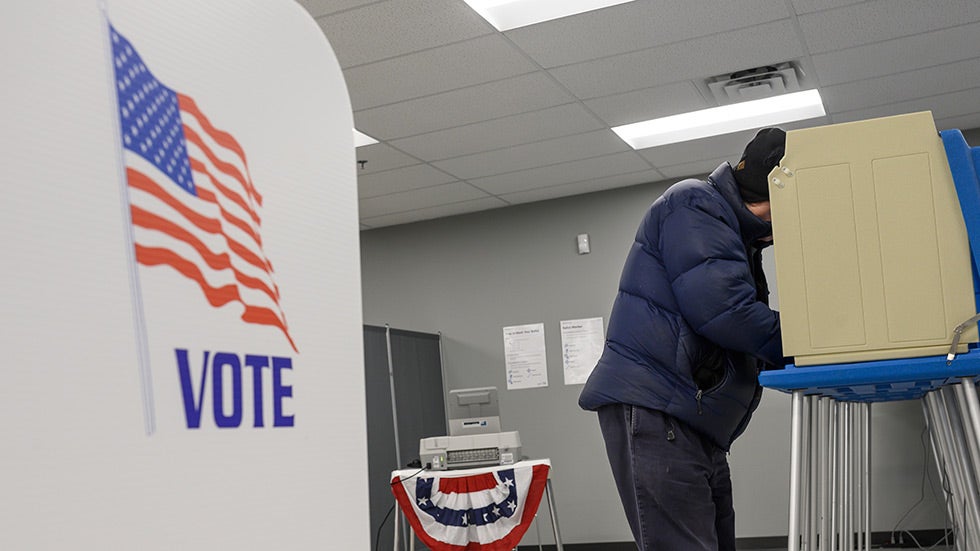By: Reid Wilson – thehill.com – January 26, 2020
This year’s election is the most important in our lifetime. It is a tired cliché, one parroted by presidents and politicians every two years in hopes of driving their voters to the polls.
But clichés become clichés for a reason: They tend to be true. This year, the decisions voters make in November will reverberate for a generation to come, through all three branches of American government and across the world.
The presidential contest alone will represent perhaps the starkest choice between two competing visions for the nation’s future since the elections of 1860 that set the Union on course for a civil war.
President Trump has governed in his first term as a fierce culture warrior, intent on reshaping American government and refocusing its foreign policy in an unprecedented manner.
The Democratic Party is likely to nominate the most liberal candidate ever to carry the party’s mantle; even the party’s leading moderate contenders, former Vice President Joe Biden and former Mayor Pete Buttigieg, have staked out positions to the left of former President Barack Obama and the 2016 nominee, Hillary Clinton.
The president who takes the oath of office a year from now will almost certainly have the opportunity to reshape the face of the U.S. Supreme Court.
By the time he or she is sworn in, four justices — Ruth Bader Ginsburg, Stephen Breyer, Clarence Thomas and Samuel Alito — will be north of 70 years old. Ginsburg and Breyer are already in their 80s. Thomas, Ginsburg and Breyer have each served on the court for more than a quarter century, making them, respectively, the 19th, 25th and 28th-longest serving justices in American history.
Voters in 34 states will elect U.S. senators this year, members who will determine just how far the next president can go in choosing the next justice — and the federal judges who serve on lower courts as well.
Democrats, who need at least three seats and the White House to win control of the Senate, are targeting Republican-held seats in Arizona, Colorado, Maine and North Carolina, as well as longer shot states like Iowa, Georgia and Kansas.
Republicans have Sen. Doug Jones (D-Ala.) in their sights, and a promising candidate running against Sen. Gary Peters (D-Mich.) too. In an era of record-breaking fundraising and spending, this year’s battle for the Senate could see at least half a dozen nine-figure campaigns.
As many as a quarter of seats in the House of Representatives will be contested next year in what will be the widest battlefield in at least a decade.
Democrats are defending a new majority, including 31 districts President Trump won in 2016, and they plan to target another 44 Republican-held seats, from Alaska to North Carolina and Florida. Republicans have eyes on 55 Democratic-held seats.
Raising the stakes even more, 2020 marks a once-in-a-generation confluence of a presidential election cycle in which control of the decennial redistricting process is also on the line.
Voters in most states will elect new state legislators, who have the power to draw legislative and congressional boundaries. Of the eleven states that will elect governors this year, seven will have a role in the map-making process.
The results of the decennial redistricting and reapportionment process have historically shaped the makeup of both state legislatures and the U.S. House.
While Democrats woke up to what they now see as the pernicious practice of gerrymandering after the Republican sweep of 2010, which handed the GOP control of redistricting in dozens of states, Republicans had long suffered under district lines drawn by Democratic legislators that ensured their party controlled Congress for a 40-year stretch.
Today, both sides acknowledge the importance the redistricting process, so much so that they have set up outside groups that can accept unlimited donations from future-conscious mega donors to coordinate their efforts across state lines.
Those groups, unprecedented in modern political history, will fund years of litigation — but the legislative majorities who get to draw the maps that will inevitably wind up in court will begin with the upper hand.
The fierce urgency of the political moment has spurred both Democrats and Republicans to invest record sums in operations designed to identify and turn out voters who are otherwise disengaged from politics, a block-by-block battle to harvest every possible vote.
And there are increasing signs that Americans, too, feel the pressure. The media, under more constant attack from President Trump and his Republican allies and constant scrutiny from Democrats who believe it is not critical enough of the incumbent, has seen business boom through higher ratings, more clicks and more subscriptions.
Surveys show voters are as tuned in to the presidential race now as they were immediately before the 2008 and 2012 presidential elections, and much more so than just prior to the 2016 race.
A CNN poll released Wednesday showed 71 percent of registered voters are extremely or very enthusiastic about voting in this year’s elections; the final CNN poll conducted before the 2016 vote showed just 46 percent were that hyped up to vote.
Every election matters, whether Americans are voting in a new president or a new school board member.
But the confluence of critical races up this year and the massive power to reshape the nation’s direction that the winners will have makes what sounds like a throw-away line in a speech the absolute truth: This year’s elections are, indeed, the most consequential in our lifetimes, and probably in more than a century.
To see this article, others from Mr. Wilson, and from The Hill, click read more.
Source: On The Trail: Why 2020 is the most important election in our lifetime | TheHill
 Listen Online
Listen Online Watch Online
Watch Online Find a Station in Your Area
Find a Station in Your Area









 Listen Now
Listen Now Watch Online
Watch Online
